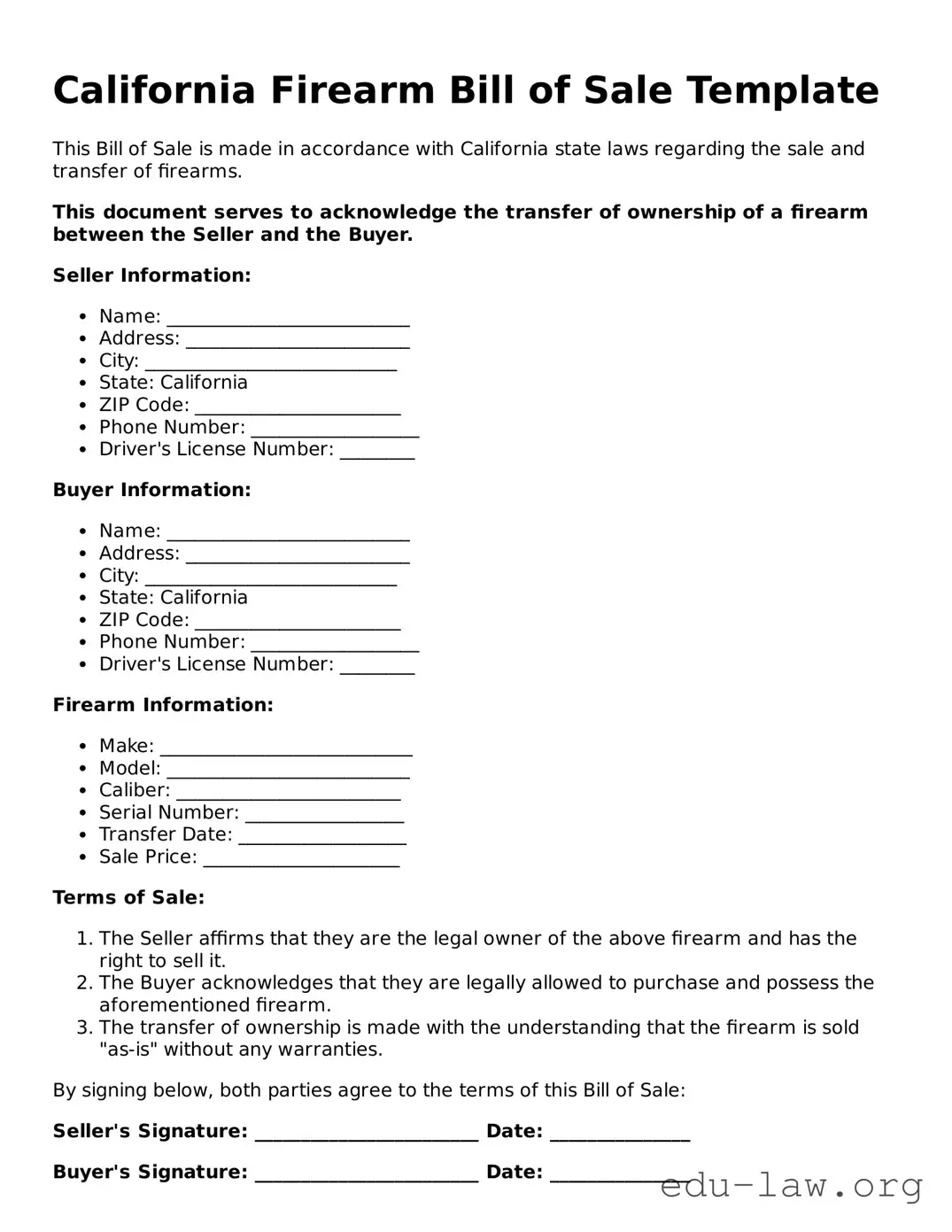What is a California Firearm Bill of Sale form?
A California Firearm Bill of Sale form is a legal document used to record the sale or transfer of firearms in the state of California. This form serves as proof of the transaction and provides essential details regarding the buyer, seller, and the firearm itself. It's particularly important due to California's strict firearm sale regulations.
Is the Bill of Sale required for all firearm sales in California?
Yes, in California, a Bill of Sale is recommended for all private firearm transactions, even though it is not always mandatory. Given the state's laws regarding background checks and registration, having this document helps protect both parties involved in the sale.
What information should be included in the Bill of Sale?
The form should include key details such as the names and addresses of both the buyer and seller, the make and model of the firearm, the serial number, and descriptions such as caliber and type. Additionally, it's wise to document the sale date and any conditions of the sale to avoid confusion later.
Do I need to have the Bill of Sale notarized?
No, it is not required to notarize a California Firearm Bill of Sale. However, having the document notarized can add an extra layer of security and authenticity, which can be helpful if disputes arise in the future.
Can I use a Bill of Sale from another state?
No, a Bill of Sale from another state may not be valid under California law. It is essential to use a consistent and appropriate form that complies with California regulations to ensure that your transaction is legally recognized.
What happens if I lose my Bill of Sale?
If you lose your Bill of Sale, it may complicate proving ownership of the firearm. While it is not a requirement to keep a copy, keeping it handy can prevent potential legal issues or disputes down the line. If lost, consider obtaining a replacement or documenting the sale again, if possible.
Do firearms need to be registered in California?
Yes, all firearms must be registered with the California Department of Justice. When filling out the Firearm Bill of Sale, it's vital to complete any required registration processes, as the sale should align with California's legal requirements for gun ownership and transfers.
What if I am selling to someone who is not a California resident?
If you are selling a firearm to a non-resident, additional federal regulations come into play. You need to ensure that the buyer follows the firearm transfer laws of their state, and you may be required to complete the transaction through a licensed dealer.
What is the importance of keeping records of firearm transactions?
Maintaining records of firearm transactions is crucial for accountability and legal compliance. In the event of a crime involving the firearm, having a Bill of Sale can help establish ownership and protect you as the seller from liability issues.
Can I create my own Bill of Sale, or do I need to use a specific form?
While you can create your own Bill of Sale, it must include all necessary details to meet California's legal requirements for firearm transactions. Using a standardized form can simplify the process and ensure that you don't miss any critical information.
